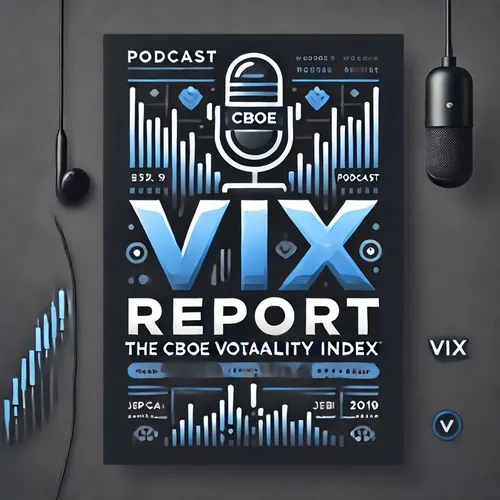"Navigating Market Volatility: A Comprehensive Look at the VIX Index"
- Author
- QP-1
- Published
- Fri 20 Sep 2024
- Episode Link
- https://www.spreaker.com/episode/navigating-market-volatility-a-comprehensive-look-at-the-vix-index--62040305
The Cboe Volatility Index (VIX), commonly referred to as the "fear gauge" of the market, is an essential benchmark designed to capture investors' expectations of future volatility in the S&P 500 Index (SPX) over the next 30 days. It serves as a real-time barometer for assessing market sentiments and projecting potential future market movements.
**How the VIX Index is Calculated**
The VIX Index derives its value from the real-time prices of S&P 500 Index options, leveraging the midpoint of bid and ask spreads. These options reflect collective market anticipations of future price movements, providing a continuous gauge of expected near-term volatility.
**Understanding VIX Values**
The VIX Index value, often referred to as the "sale price," indicates the market's expectation of 30-day volatility. Interpreting this value requires an understanding of the numerical thresholds:
- **High VIX Values**: Typically signal increased market uncertainty or stress. Values exceeding 20 are generally associated with heightened volatility, potentially reflective of economic reports, geopolitical concerns, or corporate earnings surprises.
- **Low VIX Values**: Suggest relative market calm and lower expected volatility. Values below 15 are often indicative of stable economic conditions and positive investor sentiment.
**Percent Change in VIX**
The percent change in the VIX Index, indicating how much the index has moved since the last reporting period (often the previous trading day), can provide additional insights:
- **Positive Percent Change**: An increase in the VIX often signals rising fears or uncertainties among investors, possibly due to adverse economic data releases, political turbulence, or unexpected corporate earnings.
- **Negative Percent Change**: A decrease in the VIX may imply a reduction in market anxiety, often driven by favorable economic indicators, geopolitical stability, or positive corporate earnings reports.
**Factors Affecting Percent Change**
Several factors can drive changes in the VIX Index:
- **Market Sentiment**: Fundamental shifts in investor sentiment, driven by news, economic projections, or market analyses, play a crucial role.
- **Economic Indicators**: Data releases such as GDP growth rates, inflation figures, and employment reports can significantly influence market volatility expectations.
- **Geopolitical Events**: Events such as elections, policy changes, or international conflicts can introduce uncertainty, driving up the VIX.
- **Earnings Reports**: Corporate earnings that deviate significantly from market expectations can also impact the VIX.
**Trends in the
